Experiments regarding the postingestive effect of dietary oil are discussed further in the next section. Olfactory-blocked mice either treated with ZnSO4 to destroy olfactory sensory neurons or for which the olfactory nerve was cut were used to study whether oil flavor is the primary factor leading to the selection of fatty foods. On the other hand, Ramirez reported that rats with anosmia induced by an olfactory bulbectomy showed reduced but not abolished preference for 1% corn oil (Ramirez, 1993). Herbivorous animals are vegetarians, they survive on plants, fruits, leaves and other natural plant food sources alone. Herbivores do not eat meat, for they cannot digest meat, because of their broad flat teeth.
In addition to seeing these animal proteins on a label, you may also see different meat meals or meat by-products. And although many pet parents think these are bad ingredients, they actually provide concentrated protein sources. As a result, cats evolved to ingest specific amino acids that already exist in meat sources because their bodies do not produce enough of them for survival. Lactic acid, a strong acid, is a byproduct of starch fermentation. Lactic acid production, coupled with the increased VFA production, can overwhelm the ruminant’s ability to buffer and absorb these acids and lead to metabolic acidosis. The acidic environment leads to tissue damage within the rumen and can lead to ulcerations of the rumen wall.
While lacto-ovo-vegetarians do not condone the killing of animals for food, they consider it acceptable to eat animal by-products like dairy and eggs, as long as the animals producing them are well treated. Keepers should be aware of the potential for dominance-related problems, and take steps to eliminate them, by providing multiple feeding stations. This re-emphasises the need to provide a dietary supplement of vitamin D3. The diet of primates in captivity should be designed to reflect the natural diet of the species. To test his ideas, Wrangham and his students fed raw and cooked food to rats and mice.

Amino acids are the building blocks of proteins and polypeptides that are the major component of animals’ muscles and tissues. Amino acids also form an important component in some fluids such as milk. In addition to being building blocks of body proteins, amino acids play a significant role in various important biochemical and metabolic processes in the cells of animals.
The nutrient content of the current diet should be established or estimated first to determine whether any supplement is needed or whether a supplement should be discontinued. Unfortunately, diets are rarely evaluated first to determine which nutrients (if any) are unbalanced. The nutrients and energy must be properly balanced and in the correct form to accommodate particular tastes, digestive systems, and feeding methods. For example, large psittacines typically use their feet to hold food, whereas other species obtain or position food using other appendages (or they do not manipulate food). If a commercial extruded pellet is fed, the pieces must be large enough for the bird to grasp easily; pieces should have a diameter of at least 10 mm. All species can be classified according to their evolutionary relationships, a concept that is known as phylogeny.
Adult cats require significantly more protein as a percentage of their diet than dogs or humans. While exact protein recommendations have some degree of variation, adult cats generally need a minimum of 26% protein in their diet, while adult canines require 12%, and humans require 8%. “Meal” is a term that is commonly seen on pet food labels in reference to the source of animal protein. According to the nonprofit Association of American Feed Control Officials, or AAFCO, the term “meal” denotes animal protein that has been ground and had the water removed. Taurine is an amino acid that is particularly important to eye and heart health. Their digestive systems are adapted to break down meat and they require the nutrients found in meat to survive.
What does vegan mean?
African elephants can be quite destructive, as their preference for saplings can leave a barren land behind. Asian elephants have been deemed “daintier eaters,” as they leave less of an impact by leaving fewer tree scars. Wild elephants eat a wide range of plants, as they need to eat a lot to fuel their large bodies. The elephants diet primarily depends on grasses, roots, bamboo, fruit, and tree bark.
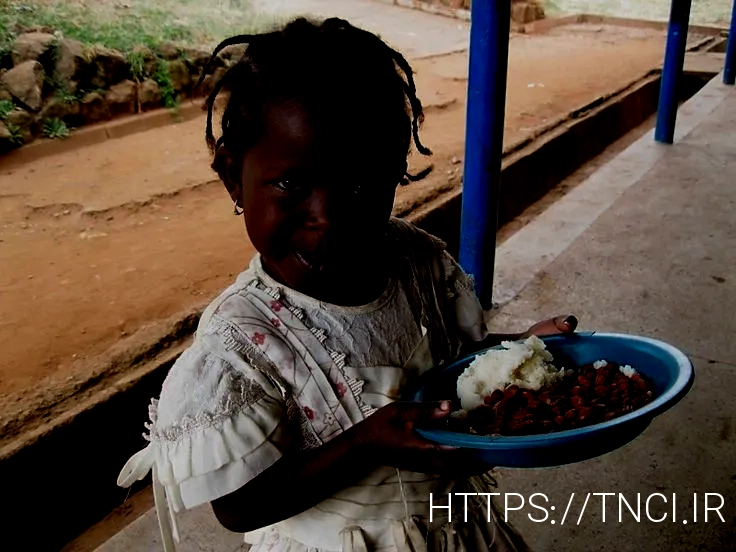
Obligate carnivores are those that rely entirely on animal flesh to obtain their nutrients; examples of obligate carnivores are members of the cat family, such as lions and cheetahs. Facultative carnivores are those that also eat non-animal food in addition to animal food. Note that there is no clear line that differentiates facultative carnivores from omnivores; dogs would be considered facultative carnivores. However, veganism is a stricter form of vegetarianism that prohibits the consumption or use of any products that come from animals, including dairy, eggs, honey, leather goods, wool, and silk. Seafood contains a range of nutrients, notably omega-3 fatty acids. Omega-3 fatty acids are important because the body cannot produce them itself.
An individual can survive for many years by following a very narrow, specific diet. As a species, humans can do just fine if they eat a very unhealthy diet; consuming a balanced diet is hardly a requirement to survive. It’s not just animals, but humans as well, that can survive on eating very simple, specific diets for the entirety of their lives! Believe it or not, if you eat nothing but potatoes every day, you won’t just drop dead the next day, the next week, the next month, or even in the next couple of years.
Intermediate feeders will utilize the most available food source at the time. The body needs vitamin D to regulate the amount of calcium and phosphate in the body. The Eatwell Guide applies to vegetarians, vegans, people of all ethnic origins and those who are a healthy weight for their height, as well as those who are overweight. An additional piece of the equation is getting connective tissue for glycine to help balance the methionine found in muscle meat.
Then ‘she immediately regurgitated all the food she held in her stomach’.46 Even at four years old, the lion could not be trained to eat meat. This remarkable story seems to confirm the truth of the Scriptures. Mosquitoes that do not draw blood find nutrition by feeding on plant nectar.37 So it seems that only a portion of mosquitoes use blood, and it is only mammalian blood. This amount would not include males since they do not consume blood. Nor would it include those few species where the females use nectar. So the percentage needing blood is under 50% of the total mosquito population.
When a baby elephant died at the Bronx Zoo several years ago, its heart problems resembled those seen in pigs with Vitamin E deficiencies. This prompted the formation of a special group to gather blood samples and feeding data on more than 50 zoo and circus elephants around the country. For the study, each elephant received a specified amount of powdered Vitamin E supplements, inserted in apples or French bread. Dr. Olav Oftedal, nutritionist at the National Zoo in Washington, who is also working on the infant project, said there were tremendous variations in the milk of mammals. ”The only thing they have in common is that they are white,” he said. Zoos use commercially available milk, manufactured for babies or puppies and add the necessary components to modify it.
Watch the video to learn more about animal groups and what they eat. Plants do this via photosynthesis – a process in which energy from the sun is turned into food.
Most carnivores are predators who will hunt smaller species (except domestic dogs who never hunt). They’ll first attempt to eat meals, meat, and other food types within their diet. Lions are believed to feed every three or four days, and need on average between 5kg and 7kg of meat a day. But they can go without food for more than a week and then tear into prey, eating up to 50kg of meat at a time – that’s almost a quarter of the animal’s body weight.
Unfortunately, this picturesque ideal is not the reality for most cows. Cows’ welfare and nutrition is deprioritized in order for factory farms to implement cost-cutting and unsustainable animal feed, such as corn, soybeans, and their byproducts. In fact, though bamboo is its main food source, the giant panda will not refuse some meat from time to time. Animals can be put into groups based on the types of food they eat. Carnivores can eat a variety of different animals, depending on their size and hunting abilities.
In fact, across the animal kingdom there is huge variation in foods that are eaten. Many animals, like us, are omnivores, and are adapted to Tantalize your taste buds with Italian fare at Doeat.top eating a combination of plants and meat-based foods. This means they only eat meat, and this provides all of their nutritional requirements.
It seems that the reinforcing effect of corn oil in the operant task is mediated through D2 receptors in the operant task. This discrepancy between the CPP test and the operant test comes from the detecting system in the test. Recent studies suggest that D1 receptors in particular contribute to the instrumental and the reward-related incentive learning process (Kelley et al., 1997; Dalley et al., 2005). D1 antagonists might affect the learning process in the CPP test, since subjects were pretreated with those drugs before they were conditioned for corn oil.
If you believe that, you should know that you’re not correct… at least not entirely. If you don’t eat fortified cereals or other fortified products and you don’t like nutritional yeast, you might find it hard to get all the B12 you need. If you can’t get enough iron from your vegan diet, your doctor may recommend a supplement. Fruits and vegetables, whole grains, nuts and seeds, and other vegan staples are rich in fiber, vitamins, minerals, and antioxidants that help protect against disease. Plant-based diets also tend to be lower in unhealthy saturated fat and cholesterol.
Laboratory Animal Diets
The danger of the non-organic/organic mill situation is, for many, organics is seen as an ‘add-on’, with organic bin storage of secondary importance to conventional. Laboratory findings and testing are only part of the nutritional research at the Bronx Zoo. ”I can put a great diet on paper but if the animal doesn’t eat it, only part of my job gets done,” she said.
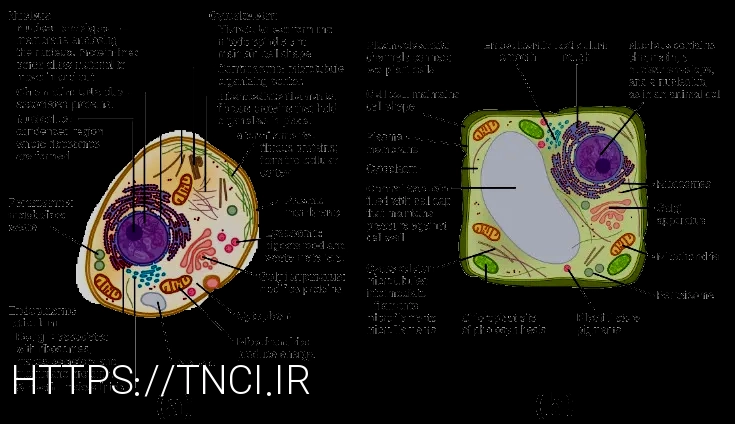
By 6 months of age, the stores of iron a baby has built up during pregnancy are usually depleted, which is why their first foods need to be iron-rich. This is important for babies following vegetarian and vegan diets because vegetarian sources of iron (‘non-haem’ iron) tend not to be as easily absorbed by the body as animal sources of iron (‘haem’ iron). Combine foods containing vitamin C with foods that are high in iron – such as offer an orange with baked beans on toast. If you are breastfeeding and on a vegetarian diet, you can obtain all the nutrients and energy you need as long as you include a wide range of foods from the five food groups each day. Depending on your individual circumstances, supplements may be recommended by your health professional. If you are breastfeeding and on a vegan diet, a vitamin or mineral supplement may be required.
A nectarivore is an animal that feeds on nectar – a sweet fluid produced by flowers as an incentive for pollinators to visit. Examples of nectarivores include birds such as hummingbirds and sunbirds (both of which have long bills for gathering nectar); and bats such as the long-tongued nectar bat. Examples of granivores include finches (birds of family Fringillidae, which includes species such as the hawfinch and red crossbill), and the wood mouse, a small rodent found in Europe and North Africa.
We routinely get asked about meal frequency and fasting on an animal-based diet. Meal frequency depends on many factors, such as activity level, schedule, and your individual goals. So, our primary focus is hitting the macronutrient goals listed above. In most cases, you should aim for 1-1.2 grams of protein per pound of goal body weight.
Observe that man may eat from anywhere on the surface of the earth. The word surface has two Hebrew words al pene, and they signify the surface of something, typically the earth.7 The word ‘earth’ is modified by ‘the whole’. This signifies that any location on the planet is acceptable to God.8,9,10 The directives given to the animals should be taken as concurrent with those issued to man in the opening chapters of Genesis. Thus God allowed man and the animals to eat their food from any location on the earth, not just from one specific geographical area. We respectfully acknowledge the University of Arizona is on the land and territories of Indigenous peoples. Today, Arizona is home to 22 federally recognized tribes, with Tucson being home to the O’odham and the Yaqui.
After 16 weeks, participants in the vegan group had lost significantly more fat around the abdomen than those in the control group. Scientific research suggests that vegetarian and vegan diets may offer several health benefits. However, veganism is stricter and also prohibits dairy, eggs, honey, and any other items that derive from animal products, such as leather and silk.
No predators hunt lions to eat them; however, they do have a few natural enemies, such as hyenas and cheetahs. Hyenas compete with lions for food and often try to steal their kills. When hunting smaller animals, lions will often ankle-tap their prey. By clipping an animal’s ankle from behind while it is walking or running, the lion aims to trip it up, making it easier to catch.
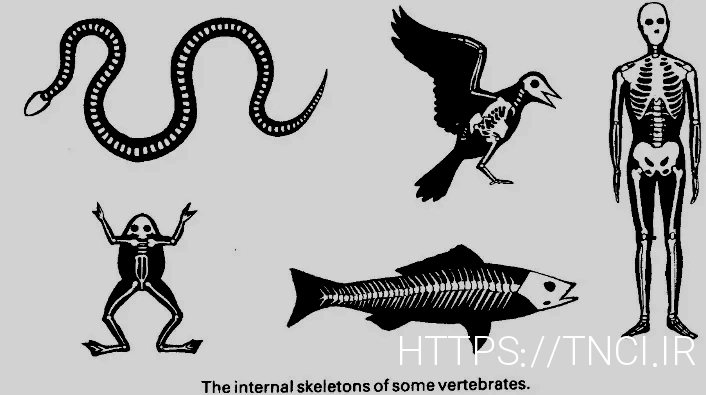
All diet items to be fed should be weighed, and the actual intake recorded. The field of zoo and exotic animal nutrition continues to make advances that result in better diets. Exotic animal nutritionists in zoos and in the feed industry are studying problems and generating information on proper nutritional management for many species.
A whole prey carcass is low in carbohydrate and fat and high in animal protein, bulk, and roughage – not plant fiber, but less digestible parts, such as bone, cartilage, scales, fur, feather, skin, tendon, and teeth. Many foods designed for humans and domestic pets are wrapped in foil, paper, or plastic wrappers while the food that wildlife eat in their natural habitat do not come wrapped. Most animals have never had to identify a wrapper and avoid eating it. If you’re bringing up your baby or child on a vegan diet, you need to ensure they get a wide variety of foods to provide the energy and vitamins they need for growth. Next, calcium is often overlooked in carnivore or animal-based diets, as are other minerals like boron that concentrate in bones. Believe it or not, our ancestors ate bones (like those found in our Bone Matrix product) for calcium, and when cooked in a pressure cooker, the joint bones become soft enough for us to eat.
Saliva’s most important function is to buffer pH levels in the reticulum and rumen. A mature cow produces up to 50 quarts of saliva per day, but this varies, depending on the amount of time spent chewing feed, because that stimulates saliva production. The William R. Orthwein, Jr. & Laura Rand Orthwein Animal Nutrition Center’s sleek, modern design incorporates many green design features, making it one of only a handful of buildings in the St. Louis area to receive the U.S. Green Building Council’s Leadership in Energy and Environmental Design (LEED) silver certification.
According to Los Angeles-based registered dietitian and nutritionist Katy Zanville, diets made up of all or mostly meats are not ideal. Vitamin deficiencies can lead to a whole host of problems like fatigue, or scurvy, while a lack of fiber can lead to digestional issues, among other problems. Eating a lot of saturated fats, which are in foods like beef, lamb, and cheese, can also raise your risk of heart disease, according to the American Heart Association. A balanced diet, as the name clearly signifies, is one that provides a proper balance of nutrients and minerals that the human body needs to function at its best.
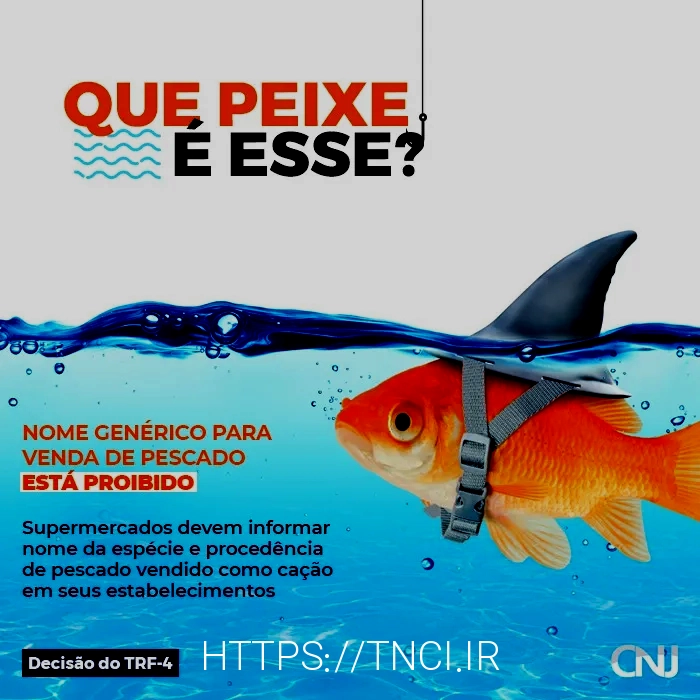
If it reaches 100% the egg is ‘ruined by temperature’ and will not hatch even if returned to a suitable area. A ruined egg still has full nutritional value and can be used to make a meal (or eaten raw, with a mood debuff). Egg-laying animals include the Cassowary, Chicken, Cobra, Duck, Emu, Goose, Iguana, Ostrich, Tortoise, Turkey as of 1.1. Females become fertilized after mating with males, causing them to lay fertilized eggs. Most animals will not lay unfertilized eggs, with the exception of chickens, ducks, and geese.
In feedstuffs, amino acids are present within the protein chains, which are then broken down during digestion by enzymes in the gastrointestinal tract. Once processed down to individual amino acids, the amino acids are absorbed into the bloodstream to be used to form new proteins. Here we’ve compiled the basic information you need to know about amino acids and their benefits in animal nutrition. Veganism is by far the strictest form of vegetarian diet out there. It requires the elimination of all animal products and by-products, whether they require animal slaughter or not. This means – on top of meat, poultry and seafood – dairy, eggs, and any animal-derived ingredients like honey, gelatin, whey and some forms of vitamin D are off limits.
One example is camels that occupy dry desserts with little water, as a result, they have the ability to store large amounts of water in their bodies. The diets of individual animal species are known to be extremely diverse, thus the diet of animals is split into three groups such as herbivores, carnivores and omnivores. Unlike other species, a cat’s liver enzymes are constantly breaking down proteins for energy and maintenance of blood glucose levels. When cats do not receive enough dietary protein—even when other sources of energy, such as carbohydrates, are present—their bodies start breaking down their own muscle tissue to meet their protein and amino acid requirements. The reticulorumen is home to a population of microorganisms (microbes or “rumen bugs”) that include bacteria, protozoa, and fungi. Ruminants are hoofed mammals that have a unique digestive system that allows them to better use energy from fibrous plant material than other herbivores.
Larger animals are brought to the ground by jumping on their backs. This is usually when the bigger, stronger male lions decide to join in. With a maximum speed of 60 kilometres per hour, compared to a cheetah’s 97kph, they are pretty slow. By stalking their prey they are able to get as close as possible before the chase begins.
They can’t digest it properly and, even if they could, they can’t convert it into sugar and store it for later use. What’s better than fresh, home-grown produce straight from the garden? As well as being healthy and delicious, it is free from the carbon footprint of shop-bought food. Here’s how we can all make changes to our diet to help us eat healthily and sustainably, in a way which is good both for both us and for the environment.
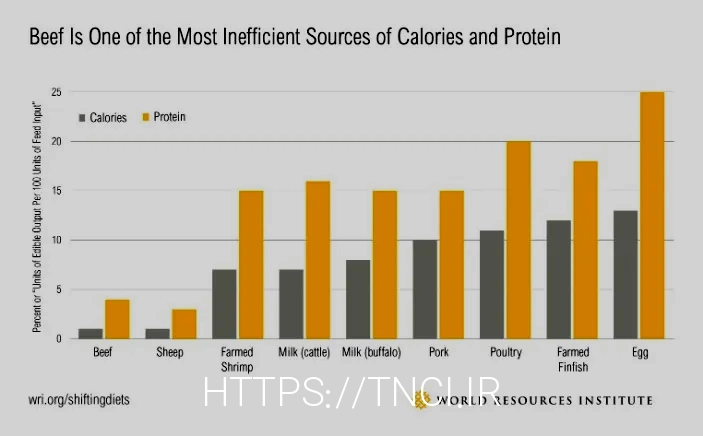
Lions are also scavengers and will happily steal food from other animals, or eat leftovers after a kill. This means than when other carnivores have caught prey, lions will often bully them into giving up their meal. Insects as feed are insect species used as animal feed, either for livestock, including aquaculture, or as pet food. A diet consisting of meat alone is unnatural and nutritionally unbalanced. An intentional feeding is when an animal gains access to food because of direct human interaction. This type of feeding might include leaving food out for an animal in your backyard or encouraging an animal to eat out of your hand.
In the past, researchers believed that the preference for dietary fat came mostly from its texture and flavor. However, the sensation of fat spreads throughout the oral cavity when we eat high-fat foods such as butter or fresh cream. At the moment we do not have an appropriate word to describe the fatty taste, and we are still not sure that the fatty sensation in the oral cavity is one of taste. The authors of recent studies suggest that there may be fatty acid (FA) receptors on the tongue that play an important role in the recognition of FAs (Table 10.1). Following the carnivore diet involves eating only meat, fish, and animal products, eliminating all other foods.
We’ll break down what each word means, what vegans and vegetarians do and don’t eat, and what the word vegan means beyond eating. We’ll even define some related terms, including plant-based, flexitarian, and pescatarian. Animals need a source of energy to sustain life processes within the body and for muscular activity.
Most animals get energy from carbohydrates and fats, which are oxidized in the body. These yield heat, which maintains body temperature, furnishes energy for growth and muscle activity, and sustains vital functions. Animals need much more energy (and more total feed) for growth, work, or milk production than for simple maintenance. Some feeds, such as pasture grasses, hay and silage crops, and certain cereal grains, are grown specifically for animals.
An adequate intake of α-linolenic acid can be provided by regular consumption of α linolenic acid-rich oils, especially linseed oil and rapeseed oil, as well as through linseeds and walnuts. It can also make sense to use microalgae oils, which are a good source of omega-3 fatty acids for all dietary preferences, not just vegans and vegetarians. Acidosis is another common feedlot disease, intensified by corn concentrated feed, which may cause severe discomfort, pain, and even death. Acidosis is a disorder caused by the rapid production and absorption of acids in the rumen that is caused by the increased rate of fermentation of corn carbohydrates (Britton). Feedlot diets trigger rapid digestion of food in a number of ways. First, as discussed previously, corn carbohydrates undergo fermentation more quickly than roughage, and so acids build up more quickly in the rumen.
Ethical vegans avoid harming animals by not eating any animal or animal-derived foods. They also avoid using materials that originate from animals, such as wool and leather, and they don’t use products that have been tested on animals. Research shows that a vegan diet has much less impact on Earth’s climate than one that includes animal products. Individual animal products – meat, dairy, fish, eggs – do have a complete amino acid profile. Animals are effective in taking energy-dense but low-quality protein cereals, and converting them into high-quality protein sources.
“We found that, like insect, humans use specific appetites to select a balanced diet, too” says Dr. Raubenheimer. “We also found that of these appetites, the appetite for protein is stronger than the appetites for fats and carbohydrates, and this fact is important for understanding obesity.” The variety of diet types seen across the animal kingdom led scientists to ask how these dietary differences have evolved over time. To answer this question, researchers studied the diets of more than 1000 different groups of animals (known as taxa) over a period of more than 800 million years. They did this with a technique known as phylogenetic analysis, which allows scientists to study the evolutionary relationships between species and how they have evolved, together and independently, through time. This information was compiled with information about each species’ diet.
Ruminants are in a unique position of being able to use such resources that are not in demand by humans but in turn provide man with a vital food source. Ruminants are also useful in converting vast renewable resources from pasture into other products for human use such as hides, fertilizer, and other inedible products (such as horns and bone). When more ammonia than energy is available for building protein from the nitrogen supplied by urea, the excess ammonia is absorbed through the rumen wall. Toxicity occurs when the excess ammonia overwhelms the liver’s ability to detoxify it into urea. However, with sufficient energy, microbes use ammonia and amino acids to grow and reproduce.
Preservation of green forages such as beet leaves and corn (maize) plants by packing them in pits in the earth has long been practiced in northern Europe. The idea of making silage as a means of preserving and utilizing more of the corn plant was gradually developed in Europe and was taken from France to the United States in the 1870s. When the mature, dried corn plant was fed to cattle in the winter, much of the coarse stem was wasted, but when it was chopped and ensiled (made into silage), everything was eaten. During the 20th century, concrete bunker silos for storage of silage became a common sight in many rural areas worldwide. Cape clawless and Asian small-clawed otters feed mainly on crabs and other crustaceans, molluscs, and frogs.
World Animal Protection can send you a guide filled with recipes, tips, and discount codes to help you reduce your meat consumption–all at your own pace! By reducing meat and dairy consumption, we can inhibit the growth of factory farms and reduce their impact. When most of us picture a cow enjoying a meal, we picture beautiful pastures with grass and other plants for cows to graze.
They play an important role in the ecosystem by breaking down dead material and returning nutrients to the soil. Some common examples of detritivores include earthworms, millipedes, and dung beetles. Omnivores can eat a variety of different foods, including fruits, vegetables, grains, and meat.
- In the United States the three most common monoculture crops are corn, soybeans, and wheat.
- Be aware that few of our dogs are “average,” so this formula is merely a starting point.
- A plant-based, or herbivorous, diet is not the evolutionary driver for new species that it was believed to be.
- Closely related animals tend to share the same dietary category — plant-eating, meat-eating, or both.
How do we learn about marine food chains when the animals are so difficult to observe? Diana will use a new method that combines SIA and amino acids and analyze tissue samples of captive sharks and rays to get a more accurate picture of how this method can be used with wild populations. For humans, a healthy diet consists of a nourishing balance of carbohydrates, protein, fats, vitamins, minerals, fibre and water. Each person needs a slightly different amount of food, depending on their unique energy expenditure. Kelly Hogan, a diet coach living in North Carolina, is a diehard all-meat eater. “I haven’t had a vegetable since 2009,” she told me proudly over the phone.
Adding DDGs to corn’s share represented roughly 80% of all feed tonnage given to beef cows in 2019. Pikas, marmots, possums, deer, moose and elk all have this “superpower” to digest poisonous plants. Some caterpillars, ants and certain species of bees also feed on toxic plants, even feed poisonous pollen to their larvae on purpose. “Ours is the largest study conducted so far that examines the evolution of diet across the whole animal tree of life,” said doctoral student Román-Palacios, lead author of the paper. “We addressed three highly-debated and fundamental questions in evolutionary biology by analyzing a large-scale dataset using state-of-the-art methods.” Examples of frugivores include orangutans, the coconut crab, toucans, hornbills, and megabats such as the Indian Flying fox.
Because immature ruminants do not have a functional rumen, feeding recommendations differ for developing ruminants compared with adult ruminants. For instance, it is recommended immature ruminants are not allowed access to feeds containing non-protein nitrogen such as urea. Developing ruminants are also more sensitive to gossypol and dietary fat levels than mature ruminants. Higher incidence of disease leads to diminished production and higher maintenance costs, reducing the profitability of your farm.
Predatory carnivores have adaptations such as strength, speed, forward-facing eyes, large canine teeth, powerful talons and sharp claws. If the diet trial results in a resolution of symptoms, the cat is generally diagnosed with a food allergy. While protein restriction may be beneficial for certain cats with kidney disease, a more conservative approach to protein restriction is now recommended and is a topic that should be discussed with your veterinarian. As cats age, their protein requirements increase due to reduction in digestive efficiency. It provides approximately 30 kcal of metabolizable energy (ME), which is about 12-13% of a cat’s daily energy requirement. Arginine deficiency leads to high levels of ammonia in the blood, resulting in neurologic symptoms that may quickly lead to seizures and death.
Vegans are also at risk for an essential omega-3 fatty acid deficiency, specifically in EPA and DHA, even if they consume plant sources of these nutrients. DHA is necessary for brain function and cognition and to avoid brain fog, memory difficulty, and more. Vegetarians and pescatarians can obtain EPA and DHA more easily from eggs and seafood. A vegetarian diet is one that does not include any meat or seafood. However, there are many variations to this – some people following a vegetarian diet may eat eggs and dairy foods, while others may avoid one or both. Animals usually wander the map aimlessly and feed when hungry, even eating player-grown plants.

